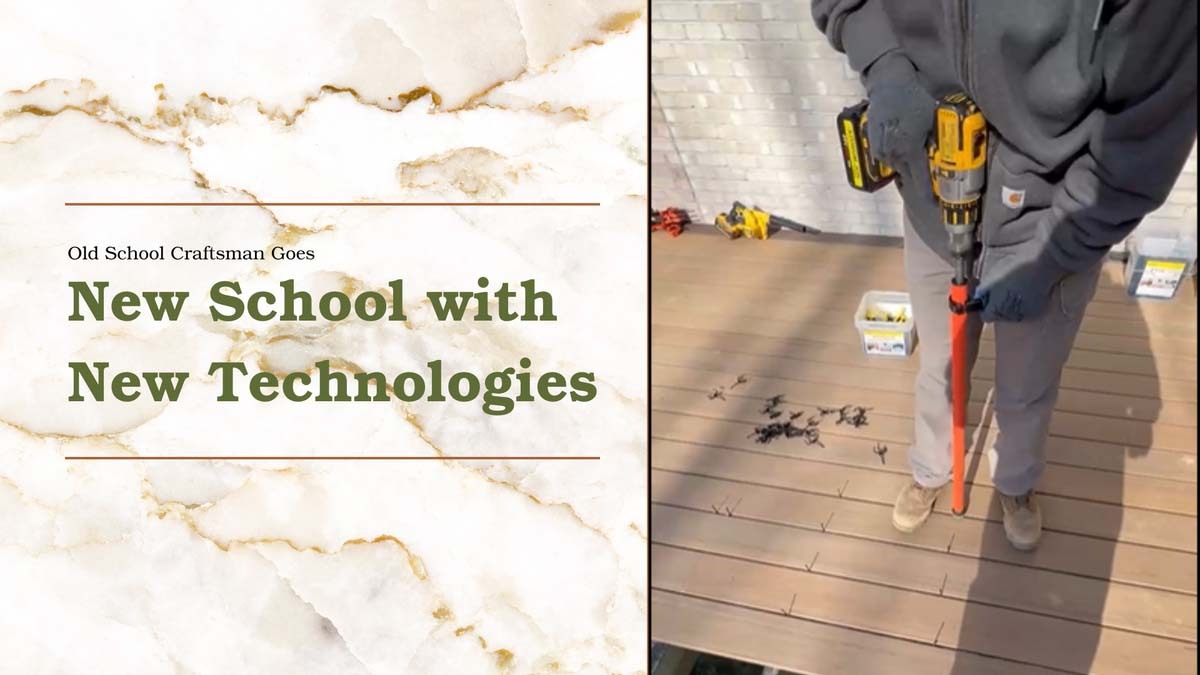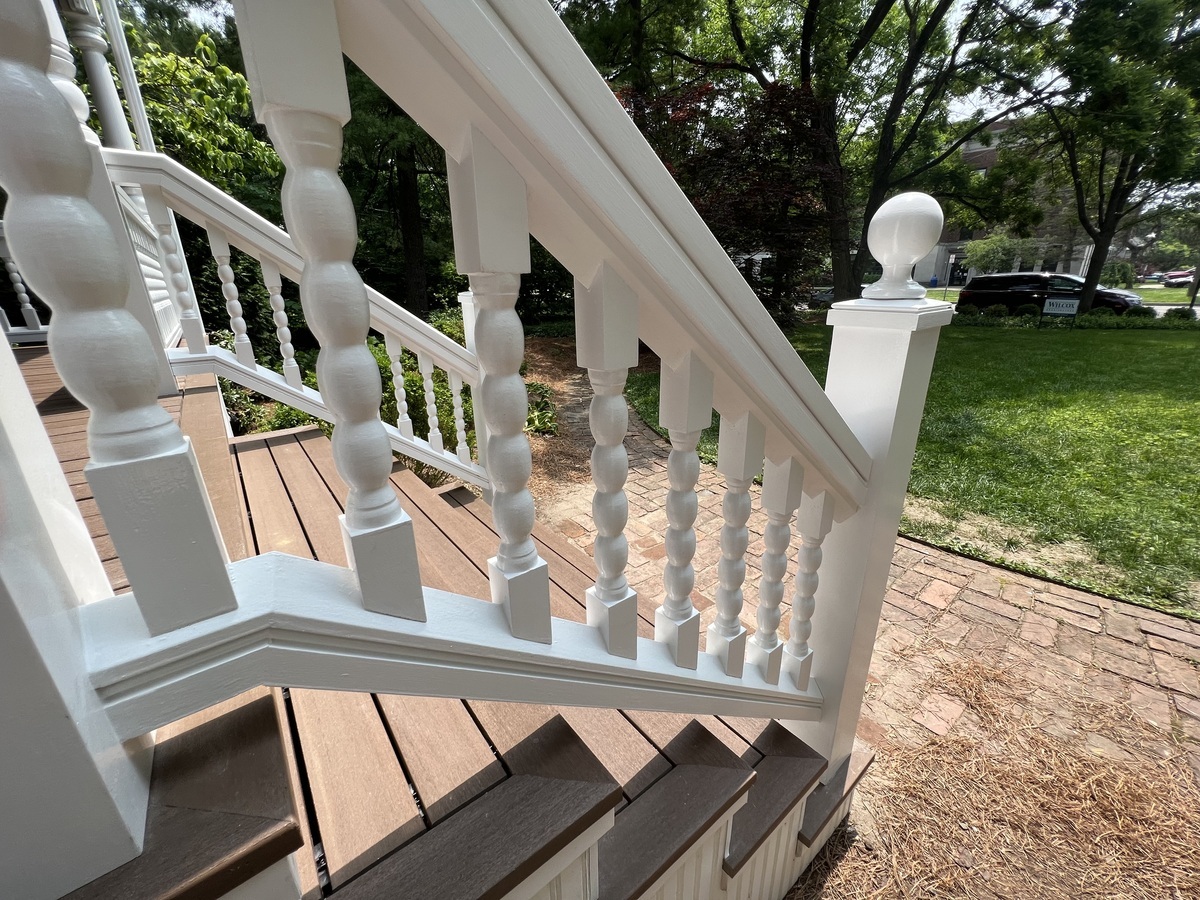Old School Craftsman Goes New School with New Technologies

It’s sort of funny when you have a name like “Old School Craftsman,” people are always a little surprised when you use new technology on the job. Sometimes I think people have this idea of me as a weathered old carpenter who only uses tools and technologies that were available a hundred years ago or more. They think that to truly be “old school” you have to ignore the advancements made in the last century.
But what people forget is that at one point all technology was new. Even things as simple as a screwdriver and screw was once state-of-the-art and cutting-edge.
Here’s my opinion: if you want to truly be a master, you need to be able to adapt and learn. The newest tools are just that, tools. They are there for craftsmen to learn how to use them to make their jobs easier and better.
I use a lot of new tools and technologies on the job. Brendon has been a big part of helping me learn and adapt to these new technologies (he really is a whizz with computer-aided design software). I wanted to set aside this blog post to talk about some of these technologies that I use and how I use them on the job. We’ll dive into three technologies that I use.

CNC Robots
If you are a long-time Old School friend, then you have heard me talk about the CNC robots before. These machines are so unique and fascinating in how they help us cut spindles that fit perfectly with any style from any era. As much as I am intrigued by their potential, it is Brendon who is the real master.
What can I say? Brendon has a mind that is geared to work with these machines. He uses CAD software to create 3D renderings on the computer to model a spindle. This includes five-axis points: A, B, X, Y, and Z. This means not only the three directions we commonly think of (length, width, and height), but also dimensions like grooves and spin. Truly incredible!
Once the computer receives this input, it sends electrical signals to the saw of the machine, and it then carves a piece of wood into a spindle. These spindles are very high quality and I have used them on some of the most “old school” projects we’ve had, including during the restoration of a Victorian porch.
We currently use three CNC machines.
- 5’ x 12’ CNC – this is the most advanced equipment, it works on 5 axis points for cutting spindles, A, B, X, Y, Z
- 4’ x 8’ CNC – the traditional CNC robot, it works with X, Y, and Z axis
- Handheld CNC – this one is used for specialty or untraditional shapes
Drill Extension Implement
I brought up drills earlier for a reason! One of my favorite pieces of technology that I use is the extended head drill implement. An extended head drill is a special tool that is designed to allow its users to drill in screws easily from long distances. It attaches right onto a regular drill, it’s just much longer than a traditional drill head.
I often use this drill for working with screws on decks, so I don’t have to bend over or spend an hour on my hands and knees securing planks to the deck support.
In essence, it has a four-foot-long extension that makes it possible for anyone to reach screws that are even in the tightest of spaces. It also saves my back a lot of strain too!
The Altendorf Saw
When I talk about mixing “new school” and “old school” technologies, nothing comes quite as close to accomplishing this as the Altendorf Saw.
This product of German engineering is the epitome of what a slider saw is meant to be. Twelve feet long and featuring a sliding saw head, this wonderful machine was meant to run for three shifts per day, every day for fifty years. That’s a career’s worth of work!
The Altendorf Saw has two motors, calculates precise angels and all inputs are done digitally. What’s more is that this beauty is accurate to 1/10 of a milimeter.
These exclusive saws must be registered with Altendorf headquarters in Germany and only Altendorf parts with the larger body. I purchased this saw from my good friend, Jon Wonderly, and have used it every chance I had since.
The Altendorf saw maintains many “old school” principles such as continuous work, precision, and durability, while also incorporating some of the most exciting new features that a sliding saw can have.
New School Needs Old School Approach
I love everything old school, so much so that I named my business (and to an extent myself) after the principles of old-school craftsmanship. There is nothing that beats sticking to traditional approaches, after all, they have been tried, tested, and refined for generations.
But that doesn’t mean that you can’t take advantage of advances in technology. These new technologies are there for us to use, and if master craftsmen can’t learn to use them to their advantage, they will quickly get left in the dust.
Curious about how I can use the latest technology on your next home improvement project? Click here to reach out to me today!
Follow us on Facebook, Instagram, and Pinterest for more discussion on historical homes and updates from our most recent projects.
Happy with the difference Old School Craftsman made on your home refurbishment? Leave us a five-star review here!
